It’s been a while. My hiatus lasted a bit longer than I originally planned. It was a rough summer. In August, my mother-in-law fell down the stairs and broke her neck. She is doing well in her recovery (far better than we could have imagined when we got the call), but as a result, we had to shut down our lives for a couple of months. My wife and I spent the rest of the summer travelling between Nova Scotia and New Brunswick to nurse her back to health. Tragedy struck again at the end of September when my father-in-law died after a long decline resulting from Alzheimer’s Disease. When we finally got home for good in October, we learned that our mortgage pre-approval had been pulled because our business had been closed for too long. All of this took an emotional and financial toll on us. Since then, my wife and I have been trying to get back to normal with mixed results.
All of this left me quite burned out. My wife and I went incognito for a while, licking our wounds while trying to get back on track. With everything going on, comics and comic book research were no longer a priority. I dropped out of “80 Years and Beyond: A Virtual Symposium on Canadian Comics” at the last minute and the organizers were very understanding. I took an indefinite leave from my informal research group with Dan Bryantowich and Victor Marsillo. Here at Comic Book Daily, editor Scott VanderPloeg graciously offered me as much time as I needed to come back. My wife, Tania, and I posted about our ordeal on the East Coast Toys and Games Facebook page, but asked for privacy and kept mostly to ourselves for several months. Many of our friends, customers, and colleagues (including several people in the comics community) sent us hopeful and thoughtful messages when they learned about everything that had happened. Other geek business owners in Halifax tried to help us out. Thank you to everyone who reached out and kept us in their thoughts. Your help and empathy kept us going.
I know that many regular Forgotten Silver readers are not on Facebook or do not pay attention to our business page and likely are hearing about this for the first time today. I am sorry for my abrupt disappearance from the scene and hope that you understand that I had a lot on my plate. I didn’t intend for this hiatus to be as long as it was. If you messaged me, left a comment, or tried to get in touch with me and haven’t heard back, please do not take it personally. The last few months have been a mess. Better things are around the corner. It’s good to be back.
Towards the end of October, I received a message from Robin Bougie out of the blue. He was about to release his then super-secret new project, Gutter Hunter, and wanted to discuss another project. I was aware of Mr. Bougie’s long-running (and recently ended) film magazine Cinema Sewer, but had never read an issue. I can’t remember where I first heard about Robin and his various works (including decades worth of humorous underground influenced adult comix such as Sleazy Slice and an adult film called The Cumming of Jizzus), but it was either through Rick Trembles or on a late night when I was researching obscure Canuxploitation films from the “Tax Shelter” era.
Anyway, we had a good chat. He showed me the cover of Gutter Hunter and swore me to secrecy until the official announcement was made. Robin ended up me sending a couple of his adult comix and an issue of Cinema Sewer for my files, as well as the first issue of Gutter Hunter as soon as he received his copies from the printer.
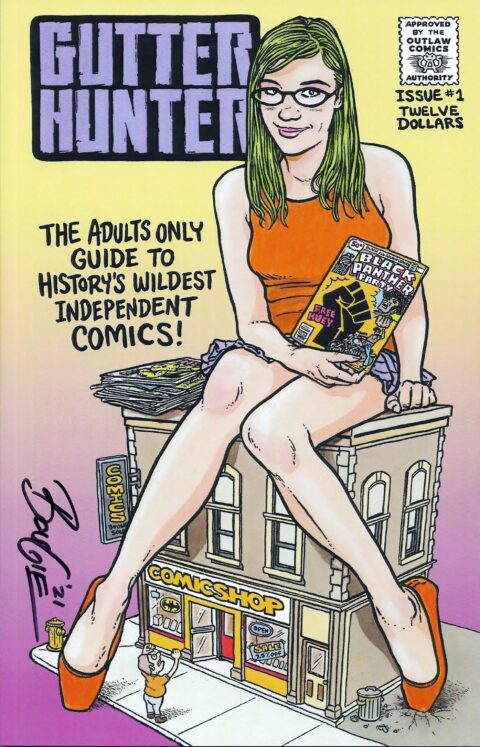
This 100-page, comic-sized tome is a tour de force. This adults-only magazine is a love letter to sleazy, overlooked underground, adult, and independent comics/comix from the 1970s to the present. It weaves between Bougie’s personal anecdotes about his decades-long journey as a comic book fan and creator, and interviews with a wide array of creators (from the well to little known), highlighted by painstaking research into obscure comics that would otherwise never receive such attention. Bougie’s analysis of his chosen subjects in Gutter Hunter # 1 demonstrates a knowledge-base and research orientation that is exquisite. Long-time readers of Cinema Sewer will find continuity here in terms of Bougie’s style and storytelling, with the only major stylistic difference being that Cinema Sewer relied heavily on Bougie and his contributors’ original artwork to help tell his stories, as well as numerous works from additional contributors. Gutter Hunter instead reprints the comic artwork that Bougie is discussing (with the occasional original comic by Bougie expertly placed in the tome) and he is the singular author of this work (at least for the most part). The magazine is something of a level-up for a man who has been honing his craft for more than three decades.
Gutter Hunter is, like all of Bougie’s work, loaded with adult (aka pornographic) content. Therefore, it is not for everyone and is certainly not safe for work (NSFW). That said, readers of Forgotten Silver will find some similarities between my column and Bougie’s own research project(s). He highlights many obscure and unseen comics in the magazine such as the work of former Fleetwood Mac guitarist Jeremy Spencer, who left the band to join the Children of God cult and published anti-rock music comics, as well as comics promoting cult leader David Berg. His overview of this subject is shocking, but the value is in his expert analysis of the subject matter.
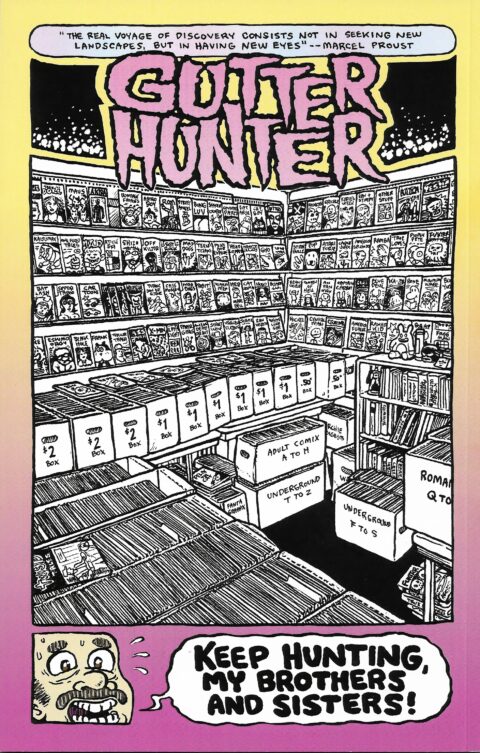
The magazine contains quite a bit of Canadian content (the majority of which involves creators whose largest contributions came during the modern era). This includes interviews with Julian Lawrence, Tim Grant, Marc Bell and Joe Matt (who, despite being American, was a key figure in Canadian comics in the 1990s). He also interviews Larry Fuller (whose work has undergone a reassessment over the past few years as a key figure in the history of African American comic books) and Marc Hansen who is best known for Ralph Snart Adventures.
Additional highlights include his overview of the work of Skids Clark, another tale of creator turned religious zealot in Jim Pinkowsi, his research into Susan Van Camp and his examination of the first computer-generated adult comic series, Scott Bieser’s Cyberlust (published in 1991 by Aircel). Bougie also discusses a couple of poorly made amateur comics from the 1980s with great care in his magazine, offering admiration towards their creators for chasing their dreams and putting themselves and their work out there.
I read Gutter Hunter # 1 in its entirety over the course of two days. I couldn’t put it down. As I weaved through the interviews, research, anecdotes, and Robin’s humorous comics, I started to feel my creative juices flowing. It gave me the boost I needed to start writing and researching again. Six months ago, I would have had a hard time believing that the best Canadian comic-related publication of 2021 would be a 100-page research project about obscure (and obscene) independent and adult comix; yet here we are. Gutter Hunter # 1 is the best comics publication that I have read this year and I am not the only one to notice.
The zine sold out in five days, mostly on good word of mouth and the pent-up audience that Bougie had built for his work after twenty-five years of Cinema Sewer. Although it had a small print run of only 600 copies, a sellout this fast is impressive for a work of this kind. I saw several well-known people commenting about the work on social media, including Rick Bradford of the Poopsheet Foundation, Jim Rugg of Cartoonist Kayfabe and even artist Stephen Bissette of Swamp Thing fame. He was also interviewed by The Aither (NSFW). Bougie ended up with an unexpected hit on his hands to the extent that he is taking pre-orders for a second printing of the issue, which is due in the new year. People who are interested in acquiring a copy can find the link at Robin Bougie’s online store (NSFW).
Outside of the incredible content found within Gutter Hunter # 1, one of the things that got me thinking was the title of the magazine itself. Most comic collectors who I know love the thrill of the hunt, be it through searching internet auction sites, long boxes at a convention or at their local comic shop (LCS). Most collectors can relate to the moment when one finds that obscure item on their wants list hidden away in a long box (and if it is in the dollar bin even better!). That said, not everyone is looking for these kinds of books. So, what are they? I like to think of gutter books and gutter hunting (now that these terms have entered my lexicon) as the types of things that are oft-forgotten and not on the radars of the majority of collectors. These are the types of comics that you find in the dusty long boxes at the back of the LCS or in the dollar bins that look weird and are not necessarily recognizable but have a story to tell. They may be adult and/or underground comix, 1980s black and white alternative fair or amateur DIY releases from more recent times. They are weird, are not necessarily defined by any sort of historical significance and are little known. Only the most niche collector even cares. Everyone else skips past them.
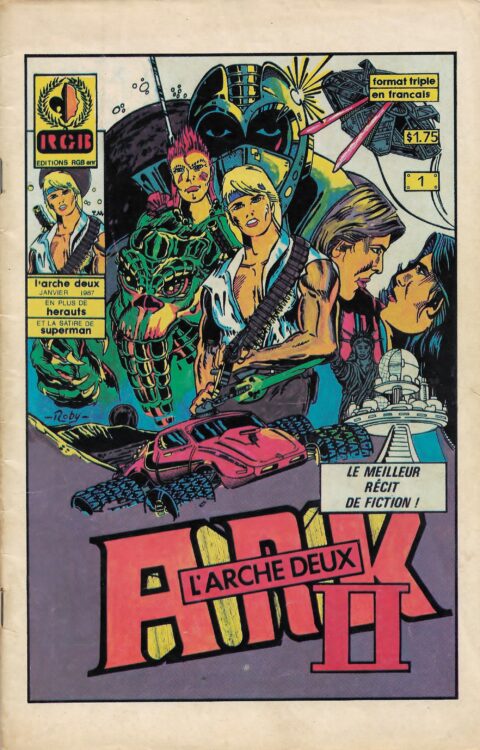
This is by no means a concrete definition, but more of a musing on my part that tries to capture the spirit of what “gutter hunting” may involve. For me, thinking about these kinds of comics is a bit refreshing. When I search for Canadian Silver Age comics, the so-called “Forgotten Silver,” I am often gutter hunting.
For much of my time researching the Canadian Silver Age, I have emphasized those forgotten gems that I think are of historic significance, but are underappreciated. In the years I have been collecting Canadian books, I have also come across and catalogued many titles that are dreadfully amateurish. Then there are the comics I have catalogued that show a bit more polish or that are interesting in their own way but were immediately abandoned by their creator(s). I buy these books when I can, but I have never really emphasized them. Reading Bougie’s Gutter Hunter # 1 made me look at some of these books again in my own collection, not as “drek,” but as someone’s dream. Bougie’s admiration for people who went about making their own comics, regardless of the quality of the final product, is infectious. It takes a lot of work to make a comic book and even the most amateurish comics have a story to tell as the purist labours of love.
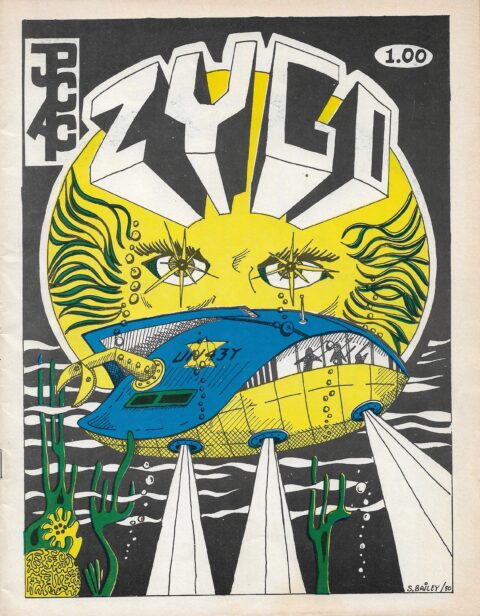
With all of this in mind, I plan to spend the first few months of 2022 emphasizing these sorts of books. Interestingly, many of the adult comix (or comics with adult themes) that were part of the Canadian Silver Age are now considered high brow examples of the medium (including works such as Sylvie Rancourt’s Mélody, Chester Brown’s Yummy Fur, Julie Doucet’s Dirty Plotte, and comics by Rand Holmes featuring Harold Hedd). I have already written about some of these creators, so in the months ahead I will instead look at the more DIY/amateur side of the gutter. As a glimpse at some of the kinds of comics I will be highlighting, let’s take a peek at a comic from the mid-1970s that I have been researching to no avail for several years: John Ward Secret Agent # 1. It is laughable just how little that I have been able to learn about this comic and it is incredible that I was even able to locate a copy for my own collection a couple of years back.
Here is what I know. The comic was published in Vancouver, BC, in 1975 by Delta Publications. That’s it. I do not know anything about the creator(s). Nobody does. The writer and artist are not named anywhere in the comic. There aren’t even any hints. The only advertisement in the entire comic is in the second half of the book and it is for Delta Publications promoting a second issue of the series. My research suggests that there was never a second issue of John Ward Secret Agent, nor did Delta Publications ever put out any other comics.
So, what is John Ward Secret Agent? Well, it’s little more than a James Bond copycat. John Ward is a British spy who gets caught up in an international conspiracy that leads him to Miami, where he uncovers a criminal organization’s plans to release a dangerous bioweapon. The comic features balls-to-the-wall action sequences involving gunfights, car chases, a hovercraft chase and even sharks, as well as spy gadgets that are part and parcel of any James Bond story. Ultimately, John Ward saves that day, while connecting with (and kissing) a sexy female member of the crime syndicate. Overall, it’s a pretty generic rip-off of James Bond, but the artwork is really good.
Someone put a lot of effort into making this comic and had dreams of making a sequel to the story (“Die, Die Again”), but nothing ever came to fruition. It is strange that the creator(s) did not identify themselves anywhere in the comic (despite the fact that it has an indicia). Perhaps they were embarrassed, but they really shouldn’t have been. I like this comic and wish that there was more. There is something charming about John Ward Secret Agent that I can’t quite put my finger on. It’s this bizarre rip-off that came out during an era of Canadian comics when the creation of a new national superhero, as well as sci-fi and fantasy comics had become all the rage. Yet, John Ward strays away from these genres and is easily overlooked as being Canadian: the characters and locations in the comic are not Canadian and if its only recognizable connection to this country is that it was published in Vancouver.
Unfortunately, there is virtually nothing out there about this comic or its creator(s). John Bell includes it on his list in Canuck Comics, but does not provide any additional details and does not mention it again in Invaders from the North. I have asked many people about this comic over the years, but few people have ever heard of it. The copy I own is the only one I have ever seen come to market. Perhaps we will never know who made this comic and that makes it the epitome of Forgotten Silver and a prime example of the types of things you can find when you start gutter hunting.
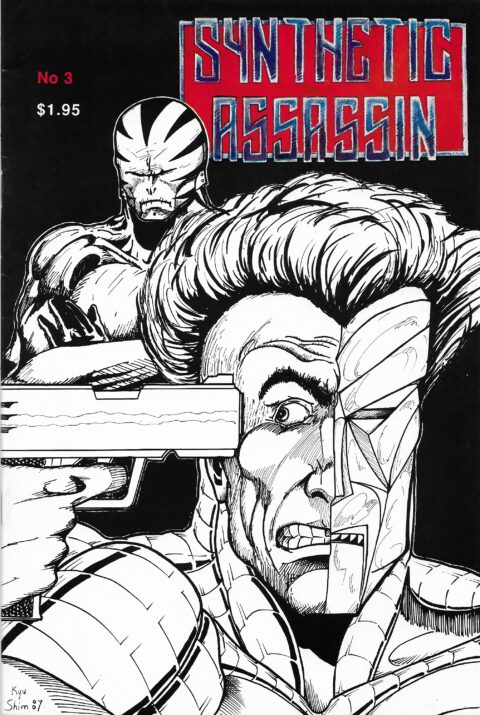
Perhaps my favourite Canadian comic series of this kind is Synthetic Assassin, which was the creation of Fred Diana and lasted for three issues in the late 1980s. Next month I will take a look at Diana’s comic company NIGHT-REALM Publishing, Synthetic Assassin and Diana’s attempts at making a comeback in the 1990s. See you then!

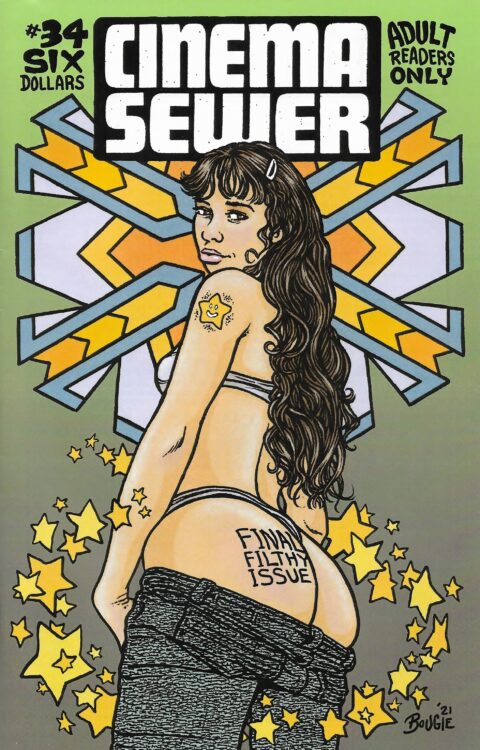
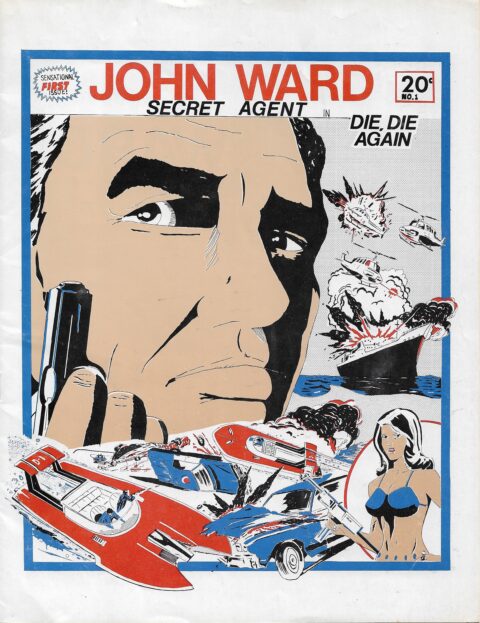
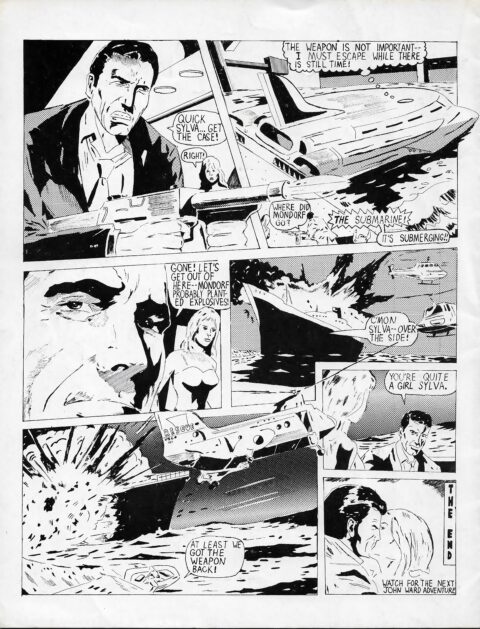
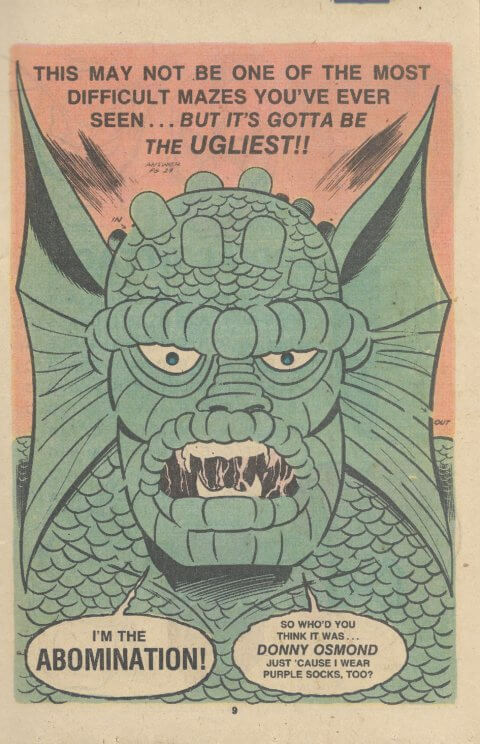
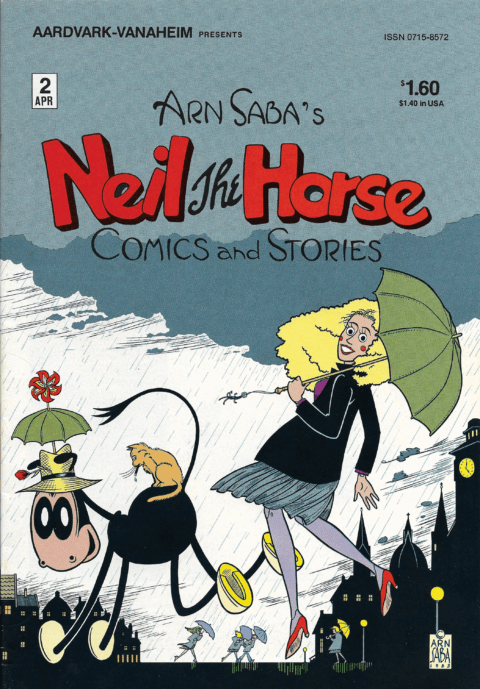
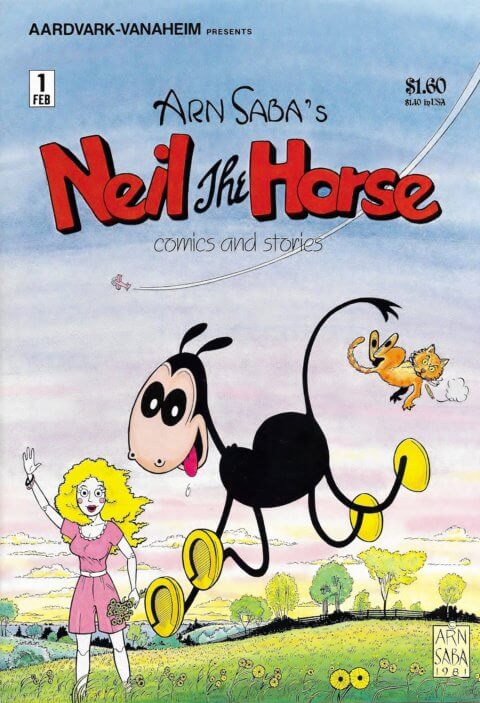
brian: What your wife and yourself have gone through over the past year; what with covid border restrictions hampering your efforts to look after your in-laws, your business, yourselves; it’s a credit to the both of you for your perseverance.
My best wishes for everything to return to as close to normal as possible, and for things to start looking up for you. As usual, your extremely detailed reports are a fascinating read and I had greatly missed them.
Thank you for your kind words, Tony C. I really appreciate it.
Hey brian, it’s great to see you back in action. I’m really sorry about all the stuff you went through the past couple of years and I’m sending you hopes for a better year upcoming.
Thanks, Klaus. Here’s hoping for a better 2022 for everyone.